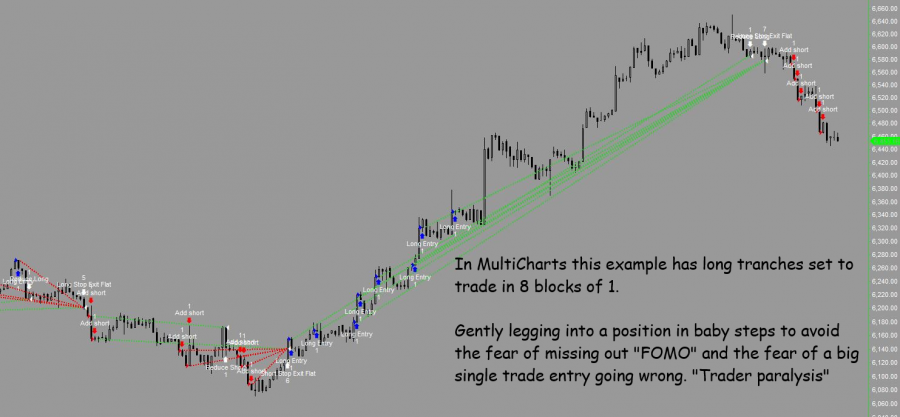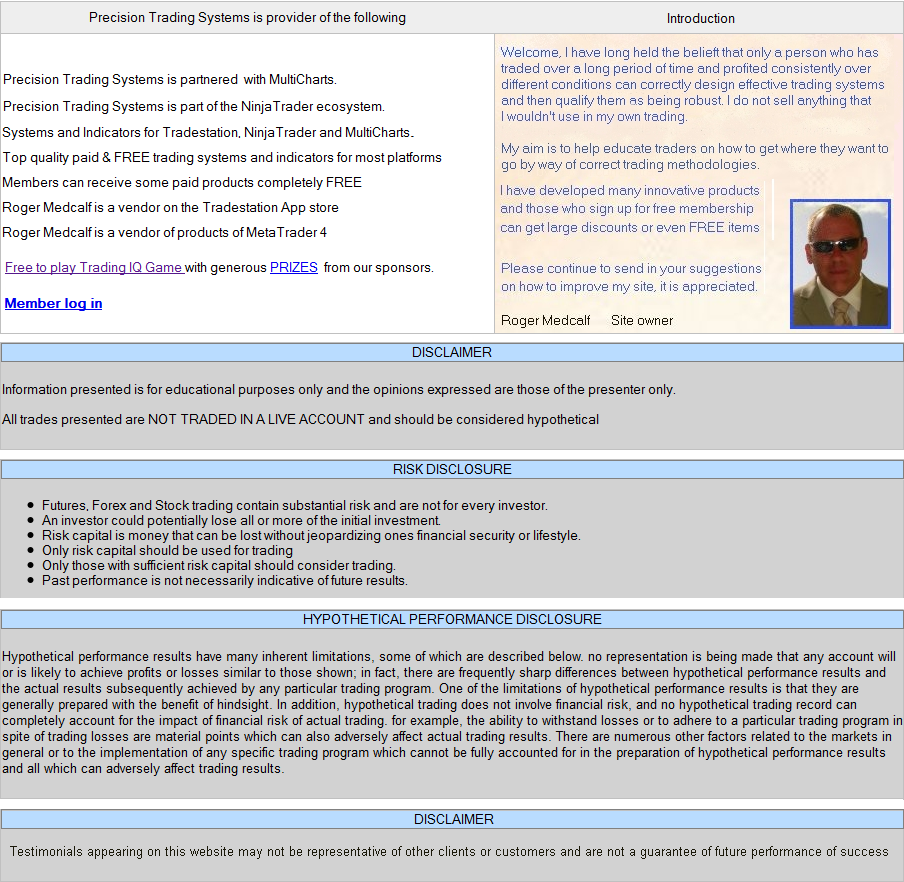
|
|
DIFFERENCES IN MAX TRADE ENTRIES HATS NINJATRADER - MULTICHARTS- TRADESTATION
The Question:
Will HATS 6 be unlimited on Tradestation ... can you please explain why the NinjaTrader version is limited to 6 or is there a work around?
The Answer:
Hats 6 for NinjaTrader 8 has each trade entry named "Buy 1", "Buy 2" etc so why name each entry signal?
The nature of Hats is that it can close 1 of 6 or 2 of 6 depending on the price action. In the event of hitting the stop loss then the code does not need to know the names as it can "exit all longs".
Clear Identification: Naming entry signals provides a clear and unambiguous way to identify each trade. This is especially crucial in strategies involving multiple entries, preventing any mix-up during the closing phase.
Enhanced Trade Management: Distinct names facilitate efficient trade management, enabling traders to apply specific actions or conditions to individual trades based on their unique identifiers.
Avoiding Confusion: Without unique names, it becomes challenging to differentiate between various entry signals, potentially leading to unintended consequences during trade execution or modification.
Comparison with EasyLanguage code in TradeStation or MultiCharts (Unlimited number of trade entry)
In contrast, EasyLanguage in TradeStation or MultiCharts, does not necessitate assigning names to each entry signal. The language relies on implicit references and the order of appearance in the script.
Reasons for the Difference:
Implicit Context: EasyLanguage's implicit context allows the script to automatically reference the most recent entry signal without explicit naming. While this simplifies coding, it may lack the specificity needed for complex trade management scenarios.
Scripting Philosophy: NinjaScript's approach aligns with a philosophy that prioritizes explicitness and precision, promoting a disciplined coding style for effective trade strategy implementation.
In conclusion, NinjaScript's requirement to name each entry signal enhances clarity and precision in trade management, providing a structured and unambiguous way to handle multiple trades. While EasyLanguage streamlines scripting with implicit context, the choice between the two reflects different philosophies in coding practices.
Conclusions and choices.
1. If you need more HATS entries in NinjaTrader you can easily create a 2nd chart and add the HATS 6 strategy and use another 1-6 entries with different settings. Obviously if you trade NQ at $20 a point you can also trade MNQ at $0.50 a point to get scalpel like trade sizing precision for the 2nd chart set up, knowing the both Nasdaq contracts have a 1 correllation to each other. The later taken entries could be aimed at the micro contracts in a smaller deal size thus avoiding an upside down pyramid.
2. Pay me for a bespoke programming job to create the maximum number of entries you need such as HATS 9 or 11
3. For the NinjaTrader version I chose six entries due to the code complexities of adding more, but it could have been HATS 8 or 9.
A wise trader can realise it is not so wise to have too many entries as this is known as the moron method to keep adding more on when the sweet spot of the entry region price level has long since been left behind. It does not make much sense to use more than 10 or 15 entries for this reason. The MultiCharts version ( and the coming soon Tradestation version )was called HATS unlimited because it describes it correctly and does not intend to infer that using hundreds of entries is a good idea.
Hope this explains things

